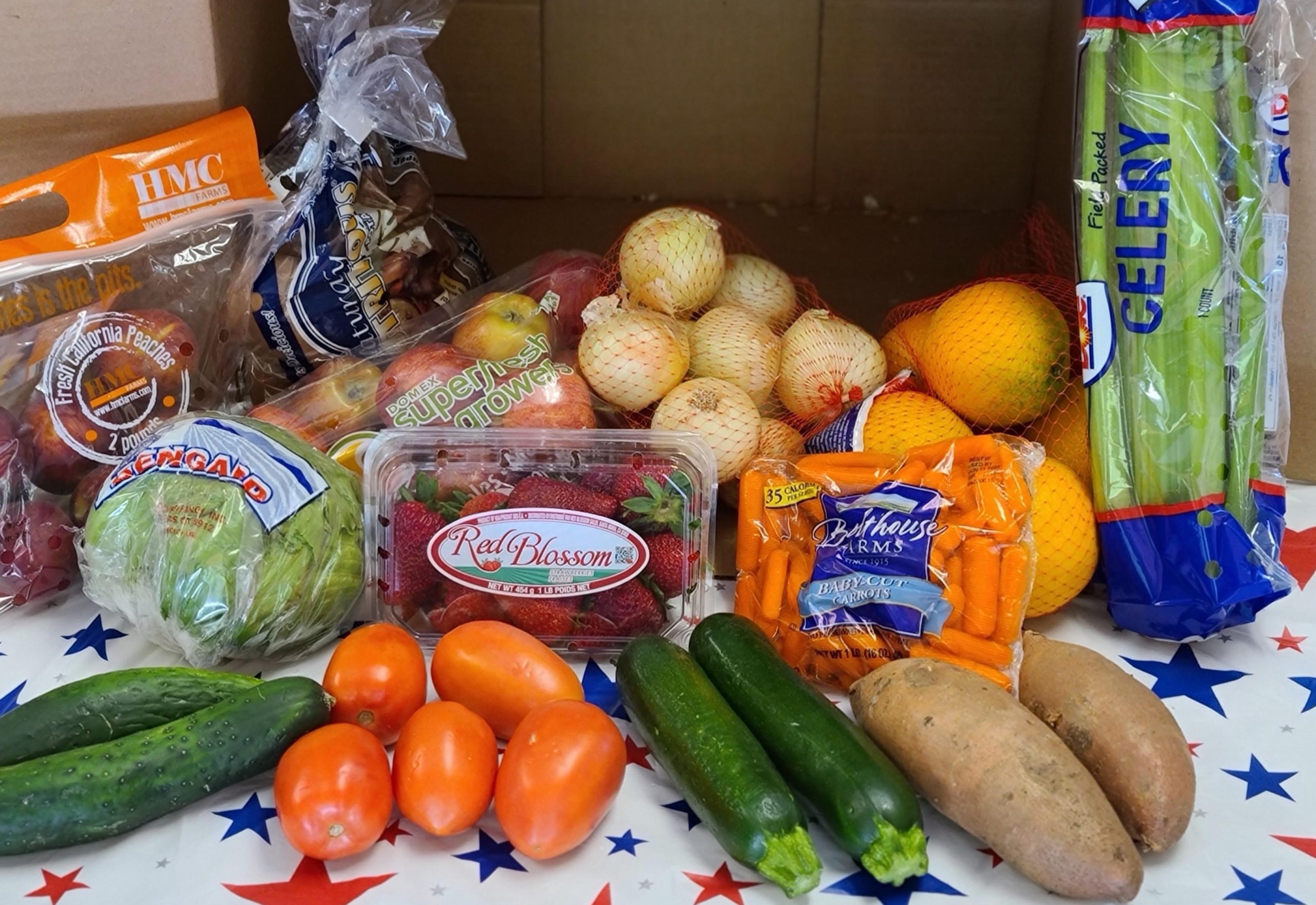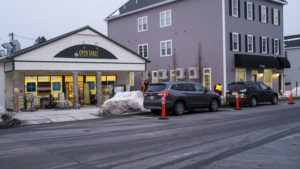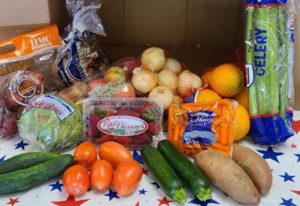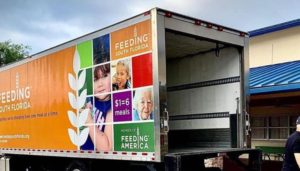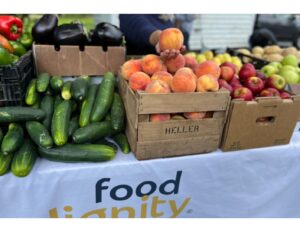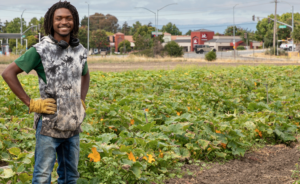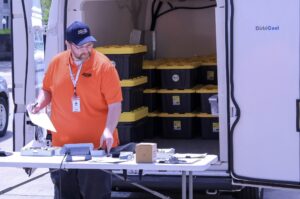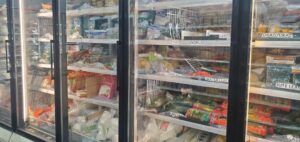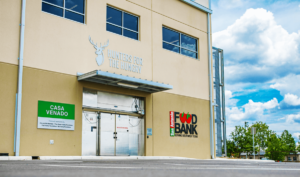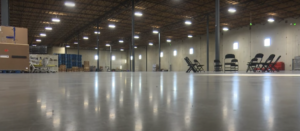For Steven Kullberg, Chief Operating Officer at Food Bank of the Rockies, a new government program promising over 3 million pounds of produce, milk and dairy from American farmers each month to supplement the food his organization provides to communities in northern Colorado and Wyoming was too good to pass up.
However, the food bank leader says that after the initial excitement, heavy apprehension lingered concerning the logistics of moving a massive amount of additional product through his organization’s doors. Kullberg is not alone in his concern about the extra costs related to getting millions of pounds of food rescued from America’s farms into the hands of people who need it.
Billed as a “truck to trunk” program, the USDA’s Farmers to Families Food Box program is intended to streamline distributions by having vetted companies pre-pack fresh, healthy food into family-sized boxes that can be easily slipped into waiting cars. Despite setbacks, including a request to revoke a $39 million contract with a San Antonio-based event planner deemed unqualified, the program has succeeded in jumpstarting the movement of millions of pounds of high-quality food from farms to families. At issue for some food banks are the many interventions and support systems required along the makeshift supply chain to accept and distribute the free food.

“The costs are still significant,” Kullberg said.
Food Bank of the Rockies was lucky to be able to draw upon its contacts in the community to solicit the donation of a 38,000-square-foot building from a real estate investment trust. The building has enough dock doors to allow the food bank to move the boxed food directly onto trucks it has rented. The boxes then begin their journey across 148,000 miles of terrain for delivery the same or next day to communities served by the organization.
Despite the donated facility, Kullberg said the food bank is investing over $40,000 per month on rental vehicles, fuel, and temporary drivers and workers to handle the excess resource. However, Kullberg acknowledged that in terms of pounds of food received, it’s a worthwhile investment to meet increased need of up to 200% in some of the communities his organization serves. In addition, Kullberg called the quality of the produce received to date from a distributor in Kansas City, Mo., “exceptional.”
He noted, “I wish the government was paying for it like they originally indicated,” referring to the so-called “last mile,” or effort needed to move food beyond a warehouse. “But whether or not they do, we are committed to making it happen,” he said about getting food to citizens in need.
“Last mile” appears to have different meanings to different entities. Matt Habash, President and CEO at Mid-Ohio Foodbank, said he’d like to see distributors drop food directly to distribution points established by his organization in 20 Ohio counties. Instead, the food boxes are scheduled for delivery to the food bank’s warehouse near Columbus.

“Some of the challenges going on around the country are folks understanding ‘truck to trunk’,” Habash said. If the food boxes are not delivered directly to distribution points across the Ohio counties his organization serves, much of the resources his food bank receives will most likely be distributed near the organization’s headquarters, he said.
“They are going to go through a second round of funding, and we hope things can be learned from this first round and really tightened up,” Habash said about the program’s distribution chain.
Habash also critiqued the lack of financial resources provided to food banks as partners in the program – especially considering the 38% increase in demand the Mid-Ohio Food Bank has seen since the start of the COVID-19 crisis. “The challenge is that no one wants to pay the nonprofit distributors,” he said about organizations like his, which are working around the clock to meet increased need. “Everyone else is being paid in the system and the nonprofit handling product has been forgotten.”
From Colorado, Kullberg agreed, saying, “We talked to our suppliers about working with us to use us as sub-contractors, which they told us the USDA was prohibiting. It’s a little confusing as to what we can and can’t do.”

West Texas Food Bank received a grant to expand storage capacity at its hub in the Midland/Odessa area in preparation to receive food boxes, but still expects its participation in the program to be difficult based on the parameters established by USDA.
“We aren’t located by any large distributor hubs,” said Libby Campbell, Executive Director, of the middlemen awarded contracts for the program. The food bank, serving a rural expanse of 34,000 square miles in 19 Texas counties, is located six hours from Dallas and more than five from San Antonio. “We’re off the beaten path,” Campbell explained. “Our transportation costs are extremely high because we’re in the middle of nowhere.”
Campbell said, however, that her nonprofit will still try to make use of the program and is in conversation with other food banks in the state regarding partnerships to pick up and distribute product. She says the West Texas Food Bank has seen a doubling of demand in recent months due to COVID-19 and an aching local economy.
“I think the program is a great idea,” Campbell said. “I think we should definitely try to support our agriculture community. But as far as the large scale of what they had originally planned, I’m not confident that we’ll be able to fully participate,” she said about USDA’s original vision.
Even so, “we’ll think outside of the box and be innovative and creative,” she said, “which, thankfully, is not outside of our realm. We’re known to be pretty resilient.” — Nicole Rasul
———–
Nicole Rasul is an Ohio-based freelance writer who covers food and agriculture. Her work has appeared in Civil Eats, The Counter, Modern Farmer, Forbes.com, Edible Columbus, Edible Indy and others. Read more at nicolerasul.com.
Photo credit: Food Bank of the Rockies
